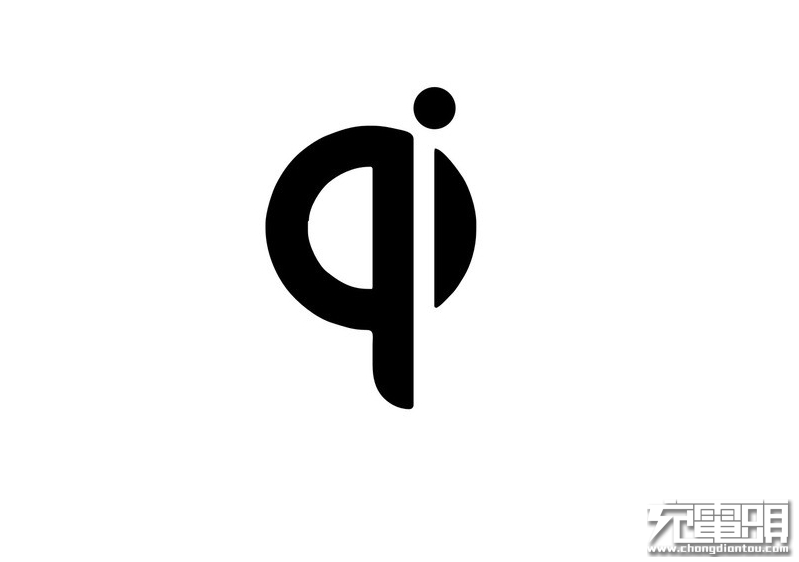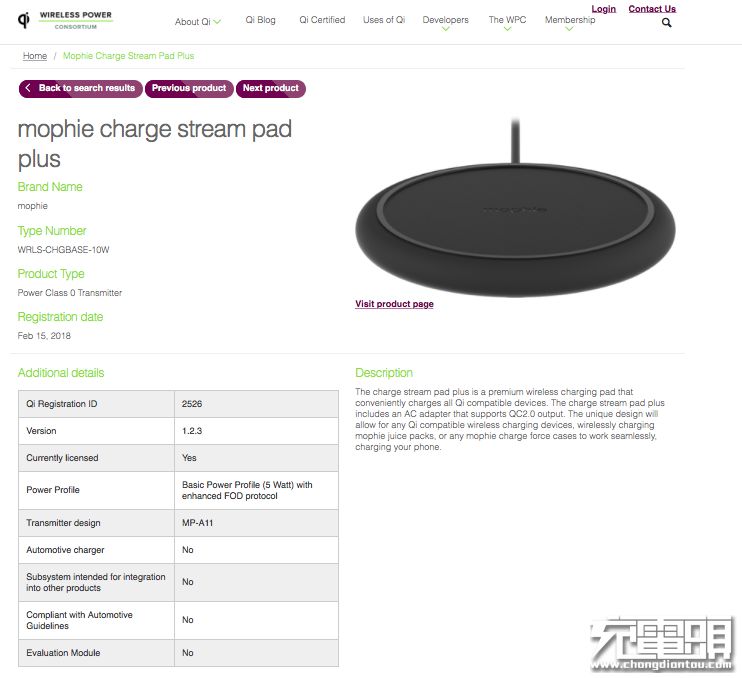Qi standard v1 .2.4 The latest version may benefit from the fixed-frequency voltage regulation scheme(reproduced on the charging head network)
Release time:2018-09-01Preview times:3437T recently, WPC Wireless Charging Alliance released the latest Qi standard on its official website, version number v1.2.4. This agreement will be enforced on March 8, 2018, which means that wireless charging products will need to be certified according to the Qi v1 .4 standard. Not the previous Qi V 1.2.3. With the release of the latest Qi standard, fixed-frequency voltage regulation programmes may benefit.

Key changes to the Qi agreement

(Note: BPP: Basic Power Profile, EPP: Extended Power Profile)
Regarding Apple 7.5 W emitter authentication, Qi v1.2.4 has the following updates compared to Qi v1.2.3:
1. The TX type MP-A11 is formally incorporated into the Qi standard in Qi v1 .2.4.
2. In the Qi v1 .2.3 version, this type of emitter passes BPP + FOD Extensions certification, and under the newly released Qi v1 .2.4, the emitter authentication level is simplified and will pass EPP(MP-A11) certification.
In summary, after the new protocol is enforced, the type of Qi certification that Apple 7.5 W emitters need to pass is EPP(MP-A11).
Interpretation of market wireless charging transmitter scheme
At present, wireless charging transmitters on the market are mainly divided into two categories:
The first type is the middle and low end launcher, and the schemes used are the frequency conversion architecture and the fixed-frequency modulation vacancy ratio architecture.
The principle of the frequency conversion architecture is to adjust the transmission power by changing the operating frequency, which will cause certain interference to the mobile phone circuit in some transmission frequency bands. At present, transmitters with variable frequency architecture on the market generally use A11 or A11a and can only pass BPP certification. Such transmitters generally have a power greater than 5W and less than 10W. There is no Q-value detection circuit. They are significantly inferior to the transmitters of the BPP + FOD Externals and EPP certification schemes in terms of FOD(metal foreign body detection) performance.
Some emitters support Apple's 7.5 W fast charge by adjusting the vacancy ratio at a fixed operating frequency on the A11/A11a basis. This architecture has poor transient response. Based on this architecture launcher, there is generally no Q-value detection circuit. It will be poor in FOD detection, it will not meet EPP requirements, and it can not pass EPP certification. As a kind of Chinese-style innovation, the fixed-frequency ratio architecture is better than cost-effective. To a certain extent, it can also allow users to enjoy Apple's fast-charging experience at a lower price, but it can not achieve zero interference with mobile phones. More importantly, it does not comply with the MFi specification and is not classified as a standard architecture of Qi. It may not be able to meet the stricter fast charging requirements of Apple's mobile phone in the future, and it is more likely to fail to pass Apple certification in the future.
The second type is a launcher that supports Apple 7.5 W and uses a fixed-frequency voltage regulation architecture.
Fixed-frequency voltage regulation is Apple's officially designated standard program. Apple's 7.5 W fast charge at the MFi conference uses a fixed-frequency voltage regulation architecture. With the MP-A11 topology, the operating frequency is fixed at about 127KHz, and the occupancy ratio is constant at 50 %. The transmission power is controlled by adjusting the voltage. Can effectively avoid interference with the spectrum of mobile phones, so that wireless charging to minimize cell phone interference. With a Q-value detection circuit, it will be more sensitive in FOD detection and meet the requirements of EPP. This scheme can be certified by BPP + FOD Extensions and EPP. After WPC Qi V2 .2.4 is executed, the unified ownership is EPP certification. The vendor representatives of the fixed-frequency voltage regulation program in the market are: NXP, IDT, and CPS.
The Apple 7.5 W launcher, which is currently known to be mass-produced and uses a fixed-frequency voltage regulation architecture, includes RAVPower, Spigen, and Anker in addition to Apple's officially recommended Mophie and Belkin. The first two use the NXP scheme, and the latter three use the CPS scheme. As the official supplier of Apple's wireless charger, NXP is naturally the benchmark of the fixed-frequency voltage regulation program. Of course, the cost will be higher. As an industry leader, China's Yichong Wireless is the most widely used in 7.5 W fixed-frequency scheme products and is also widely used in first-line brands. As for IDT, it is reported that it has also recently launched related products, I believe the market will soon enter the next round of competition. At the same time, it was found on the WPC official website certification product page that there was an updated Mophie second-generation transmitter. This transmitter is a fixed-frequency voltage regulation architecture that supports Apple 7.5 W fast charging. It is said that the program provider has changed from NXP to easy to flush wireless.

How should the brand manufacturer choose?
First of all, in terms of certification, the general wireless charging power of mobile phones in the market is higher than 5W, and it is generally 7.5 W or 10W. Therefore, the launcher program needs to pass Qi v1.2.4 EPP certification. The second is the program, because it needs to pay attention to the performance performance of charging stability, charging efficiency, FOD, interference with mobile phones, etc.. Therefore, Apple 7.5 W fast charging product is best to choose Apple's specified fixed-frequency voltage modulation architecture launcher program.
Summary:
Apple's new machine is fully equipped with wireless charging, completely detonated the market, and then LG, Nokia, SONY, Jinli, Xiaomi, Huawei and other manufacturers have or are about to follow this technology. This wave is overwhelming. It is expected that the release of the Qi v1 .2.4 version will further regulate the wireless charging market and promote industrial upgrading. The market Apple 7.5 W wireless charging product will carry the mainstream fixed-frequency voltage regulation program.

